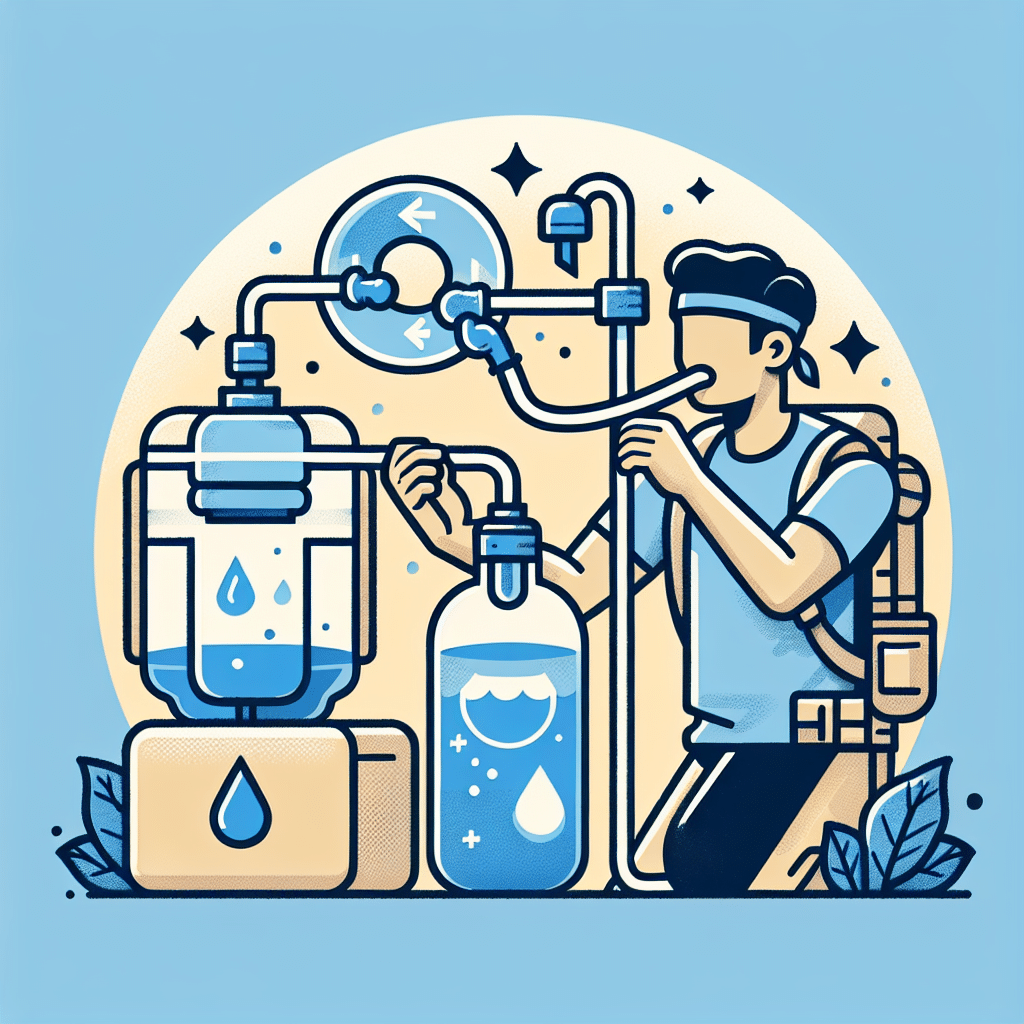Understanding the Importance of Hydration Systems
Hydration is crucial for maintaining optimal body function, especially during outdoor activities such as hiking, camping, or trekking. Creating your own DIY hydration system with a water purifier not only ensures you have access to clean drinking water but also allows you to customize your setup based on your needs. Let’s dive into how you can build an efficient and effective DIY hydration system that will keep you hydrated while enjoying the great outdoors.
Materials Needed for Your DIY Hydration System
To create a DIY hydration system with a water purifier, you will need the following materials:
- Water Reservoir: Choose a durable, food-grade container such as a hydration bladder with a hose or a collapsible water bag.
- Water Purifier: Various options are available, including filter straws, pump filters, and gravity filters. Choose one based on your typical water sources.
- Hose and Couplings: If your water system requires a hose, ensure you purchase food-grade tubing that fits your water purifier and reservoir.
- Clips or Carabiners: To attach your system to your backpack or gear.
- Protective Cases: Consider adding a protective case for the water purifier if you plan on subjecting it to rough outdoor conditions.
Step-by-Step Guide to Assemble Your Hydration System
Step 1: Select Your Water Reservoir
For your water reservoir, hydration bladders (like CamelBak) are popular due to their lightweight design and convenient drink tubes. If you prefer something more versatile, a collapsible water bag can also be a suitable option. Ensure that the material is BPA-free and capable of holding enough water for your needs. Depending on your planned activity, a capacity of 2 to 3 liters is generally sufficient.
Step 2: Choose and Attach Your Water Purifier
Choosing the right water purifier is vital. If you’ll mostly encounter clear water sources, a filter straw or pump filter is highly efficient. For murkier water, a gravity filter may be more effective. Read reviews, check certifications, and ensure you understand the lifespan and maintenance needs of your selected purifier.
-
Connecting the Water Purifier: If using a filter straw, simply insert it directly into the reservoir for immediate access. For pump or gravity filters, attach the provided tubing to the output side of the purifier. Make sure all connections are tightly sealed to prevent leaks.
-
Testing the Connection: After ensuring proper connections, perform a quick test by sucking or pumping water through the system to confirm there are no leaks and that the water flows smoothly.
Step 3: Add Hose and Accessories
For added convenience during use, add a hose to allow for hands-free drinking. Cut the food-grade tubing to your desired length (typically around 20-30 inches). Ensure that you can easily reach the hose while your backpack is on. Use hose clamps or couplings to attach the hose to the water reservoir securely.
-
Attaching Clips: Attach clips or carabiners to your hydration system for easy access while hiking or on the go. Make sure these clips are robust enough to withstand outdoor wear.
-
Stowing Away: Practice a few stowing and unpacking movements to familiarize yourself with how your DIY hydration system fits in with your other gear, making it easier to access while on the move.
Step 4: Purifying Your Water
When you reach a water source, ensure your water purifier is ready to work efficiently. If using a filter straw, simply immerse it in the water source. For pump and gravity filters, fill your reservoir or collection bag from the water source, then, if necessary, follow the instructions specific to your product for purifying.
-
Understanding Water Sources: Pay attention to the type of water sources. Slow-moving streams and clear lakes typically contain fewer contaminants than stagnant ponds. Always check local guidelines on safe water sources.
-
Post-Purification Storage: If you have more purified water than you need, store the excess in a clean container. Be cautious with handling to prevent cross-contamination.
Best Practices for Maintaining Your DIY Hydration System
Proper maintenance will ensure that your DIY hydration system remains effective over time:
-
Regular Cleaning: Clean your water reservoir and purification system after every use. Use warm, soapy water followed by a thorough rinse to keep it free of bacteria.
-
Inspect Components: Routinely check for clogs or damage in the purifier and hose. Replace any parts if you notice decreased flow rates or leakage.
-
Store with Care: When not in use, store your hydration system in a cool, dry place. Empty any remaining water to prevent mold growth and odors.
Safety Tips for Outdoor Water Procurement
- Use a Backup: Always carry extra purification methods like water purification tablets as a backup.
- Boil Water When Necessary: In the absence of a purifier, boil water for at least one minute (or three minutes at higher altitudes) to ensure it’s duly sterilized.
- Stay Informed: Before heading out, research the areas you’ll visit, noting any specific recommendations regarding water quality.
Conclusion
Creating your own DIY hydration system with a water purifier is a straightforward process that allows you to stay hydrous on your adventures. By customizing your system to your needs, selecting a reliable purifier, and maintaining your setup, you can enjoy pure, safe water in the wilderness. Whether hiking, camping, or exploring new territories, a well-prepared hydration system can significantly enhance your experience and performance. Following these tips ensures that you stay hydrated, healthy, and ready for whatever comes your way in the great outdoors.
